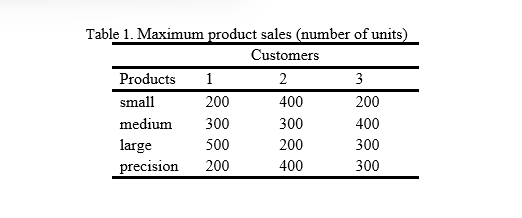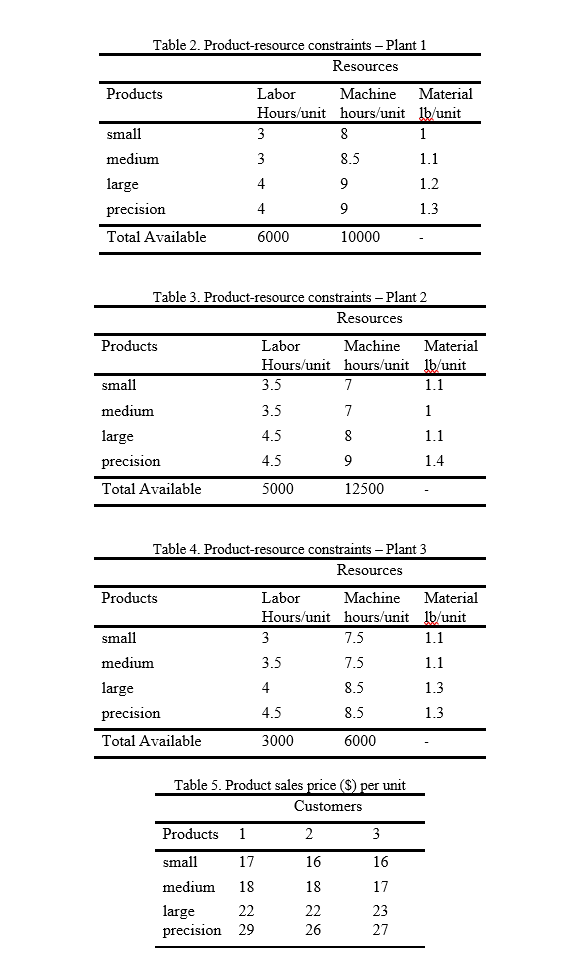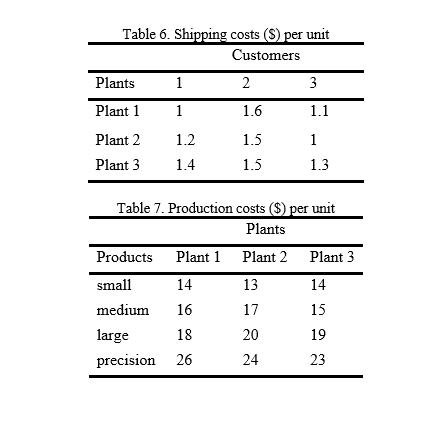Question
EAGLES is a large company that produces lenses for cameras in military applications. Four types of lenses (small, medium, large and precision) are made in
EAGLES is a large company that produces lenses for cameras in military applications. Four types of lenses (small, medium, large and precision) are made in the three plants. EAGLES has 3 major customers (1, 2, and 3) for its products. The maximum sales for each customer-product pair are given in Table 1.

Each plant can produce any of the four lens types, although each plant has its own individual constraints and unit costs. These constraints cover labor and machining restrictions, and the specific values are given in Tables 24. Note that even though the products are identical in the three plants, different production processes are used and thus the products use different amounts of resources in different plants. The last row of Tables 2-4 specifies the availability of labor and machine hours.
Product sales prices are given in Table 5, and the shipping costs from each plant to each customer are detailed in Table 6. Table 7 contains the production costs for each product-plant pair.
All shipping from plants 1 and 2 that goes to customer 1 or customer 2 must go through a special inspection. These units are sent to a central site, inspected, and then sent to their destination. This special inspection site may inspect at most 1,500 pieces.
The corporation controls the material that goes in the lenses; the material requirements for each product are given in the last column of Tables 24. A total of 3,500 pounds of material is available for the entire system (that is, all three plants).


Your job is to determine a recommendation for the company. A recommendation must include a plan for production and shipping as well as the cost and revenue generated from each plant. In addition, you should also address the following sensitivity analysis issues in your recommendation. Note that you should address the following issues by using sensitivity analysis results as much as possible.
QUESTIONS
- If you could get more material, how much would you like without changing the optimal basis and what would you be willing to pay in total at most?
- If you could get more inspection capacity, how much would you like without changing the optimal basis? What would you be willing to pay in total at most?
- At what plant(s) would you like to add extra machine hours and/or extra labor hours? How much would you be willing to pay per hour at most? How many extra hours would you like with this price?
- The company is planning to initiate a Research and Development Project in Plant 1 for the production of the medium products that are manufactured specifically for customer q. This project will reduce the production costs of these specific products by 5%. If the cost of this R&D project is 150$, should the company initiate the project?
Step by Step Solution
There are 3 Steps involved in it
Step: 1

Get Instant Access to Expert-Tailored Solutions
See step-by-step solutions with expert insights and AI powered tools for academic success
Step: 2

Step: 3

Ace Your Homework with AI
Get the answers you need in no time with our AI-driven, step-by-step assistance
Get Started


